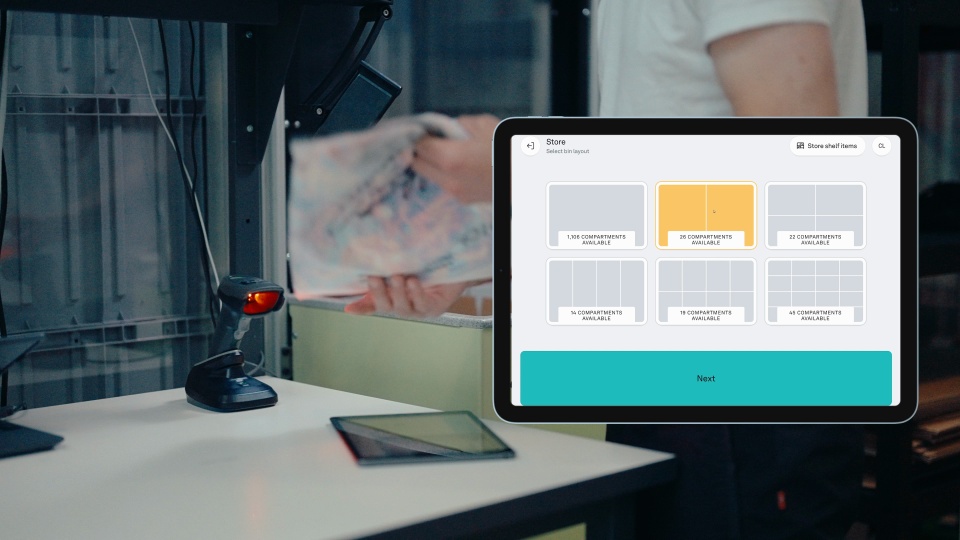NOTE: The information in this article is intended for internal partner training purposes only.
For external use, please refer to the approved materials provided to you — including our live, always up-to-date website, official sales collateral, or reach out to our BDM team for additional resources and demo support.
Pio is a different offering to AutoStore on a number of levels. The product is elegantly simple. This does lead to the fact that the customer may have to compromise to allow for that simplicity.
Those that do buy Pio understand that they are getting access to the amazing AutoStore technology at a price that was never thought possible. Their warehouse undergoes a transformation that allows them to compete with giants.
From the perspective of selling Pio, the simplicity means that your time spent on each opportunity should be significantly less.
If you are spending a lot of time on a Pio opportunity, then you are doing it wrong!
Key differences
1. Reduced cost of acquisition
You should not be spending a large amount of time on a Pio customer. That is one of the key aspects to a successful Pio sale. A lot of information is available to the customer via our website. They should come into conversations with an idea of the costs involved. With expectations clearly set from the beginning and knowledge level high, they are more prepared to make a faster decision.
We strongly recommend against a highly consultative role. Pio is a product, if the customer likes what the product does, they should buy it. If they do not like what it does, they should not buy it.
Keep it simple, and the sale will go faster.
2. Reduced data collection
At Pio, we have noted the challenge of collecting throughput and stock data from customers and have found a way to work around this. We try NOT to do it!
In our experience we have found that having a discussion with a customer and asking simple questions gets to a faster decision. Reducing the cost of acquisition and providing more certainty in the sales process.
The questions that we ask are:
- How big is your warehouse?
- What is the height of your warehouse?
- What area is dedicated to picking products?
- How many SKUs do you have?
- What % of SKUs fit into the Pio bins?
- How many picks/order lines per day on average?
- How many picks/order lines max during peak?
- Do you need to pick everything within a certain timeframe during peak?
3. Simple sizing
At Pio we have found that recommending one of our standardized products removes a lot of the friction from the sales process. Often, customers are willing to accept a solution that doesn't necessarily match their needs perfectly. Most commonly, the best starting point is to replace their "pick wall" or picking area.
To get a context of the size required to replace an area of shelving that can be reached by a human, we suggest:
- For every 4-5,000 sqft (350-450m2) of "human height" shelving a P100 is required.
Example:
A customer has 4,000SKUs in 8,000sqft of shelves and 15,000sqft of racking, then a P200 with approximately 3,000 bins would be a good starting point.
4. Simple robot throughput/capacity
Pio uses 3 robots per port as a typical starting point. With each port typically capable of at least 1,000 order lines presented in an 8 hour shift.
It is critical to stress that Pio customers can flex up and down their number of robots, so if they feel they have too few or too many, they can adjust the number.
5. Simple port calculation
Ports are supplied based on the number of robots requested on a long-term basis. Talk to your local Pio representative to confirm the number of ports supplied.
6. Simple software
The Pio app is a simple, easy to use interface for the warehouse worker. Allowing them to quickly learn the Pio way. Reducing training time and errors in the picking process.
When compared to other WCS (Warehouse Control Systems) in the market, Pio is not as feature rich. While the app is continuously improving, it is unlikely to ever reach the level of customization that is possible with a fully customizable WCS.
At Pio we listen to our customers and work to implement the most requested features. If your customer has a very specific request, we would love to talk with them about what they are trying to achieve. We will be very clear if the feature is something that Pio could develop in the future, or if we will never develop that feature.
7. Simplified integration
With simple software, comes the ability to easily integrate Pio to an order management system. This could be an ERP tool (Enterprise Resource Planning), WMS (Warehouse Management System), CMS (Content Management System) or OMS (Order Management System).
Pio does not perform the work of integrating a customer's system. This is typically performed by:
- the customer
- a third-party integration specialist
- the ERP, WMS, CMS, OMS provider
Selling Pio is all about speed, simplicity, and clarity. It’s a product, not a project. When the right customer sees the value, the sale moves fast. And that’s exactly the point.
So keep it simple, stay focused, and let the product speak for itself.
NOTE: The information in this article is intended for internal partner training purposes only.
For external use, please refer to the approved materials provided to you — including our live, always up-to-date website, official sales collateral, or reach out to our BDM team for additional resources and demo support.

